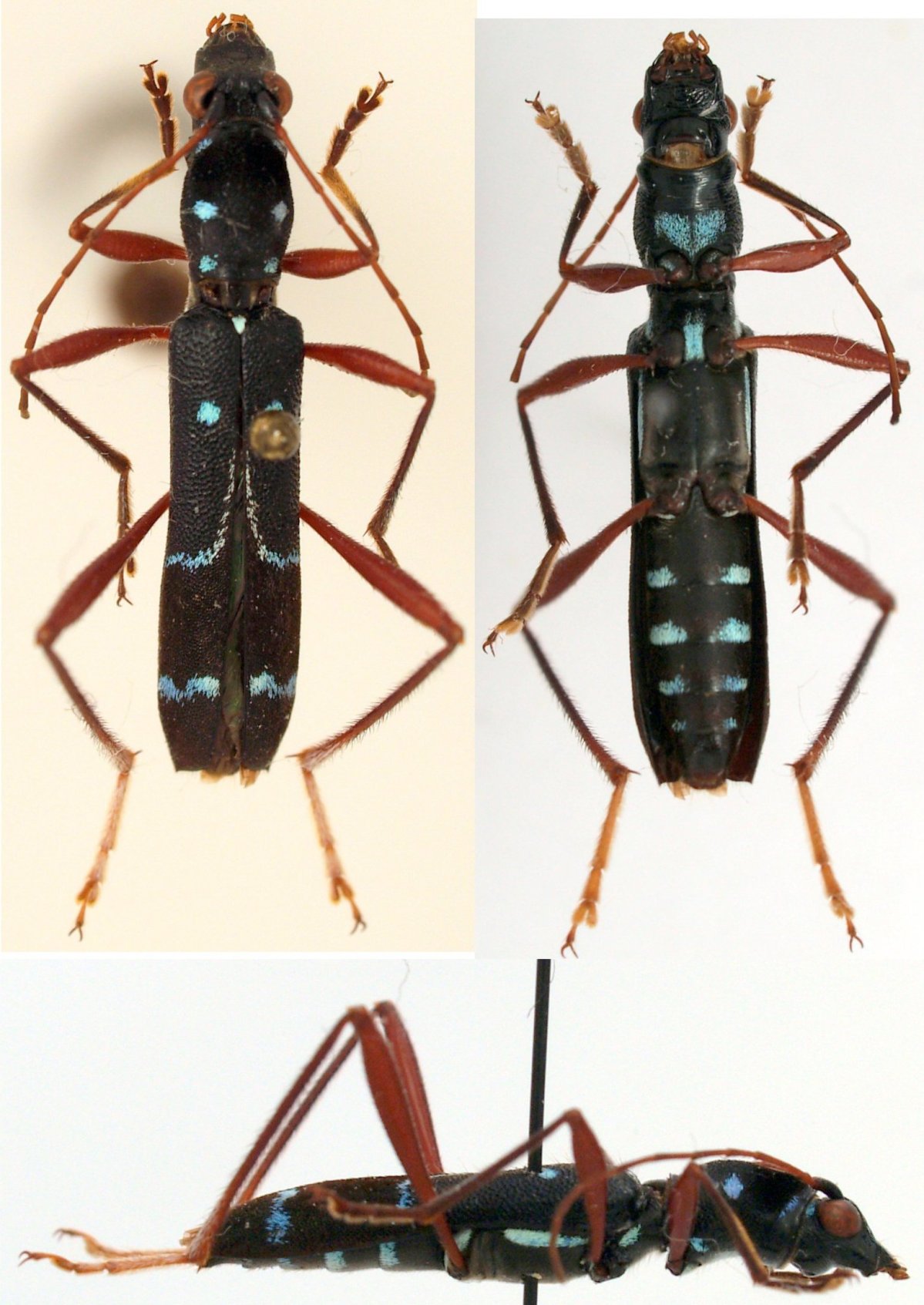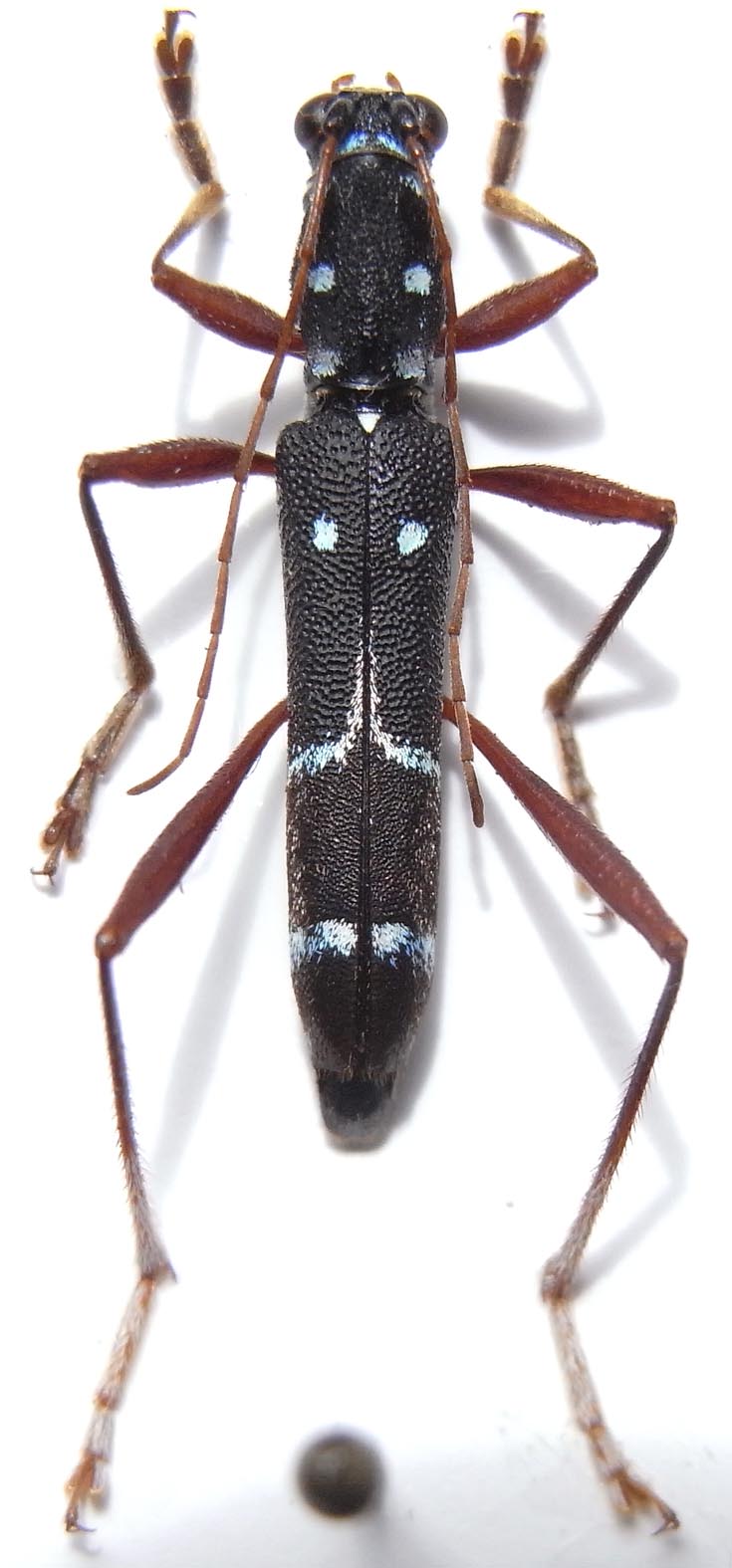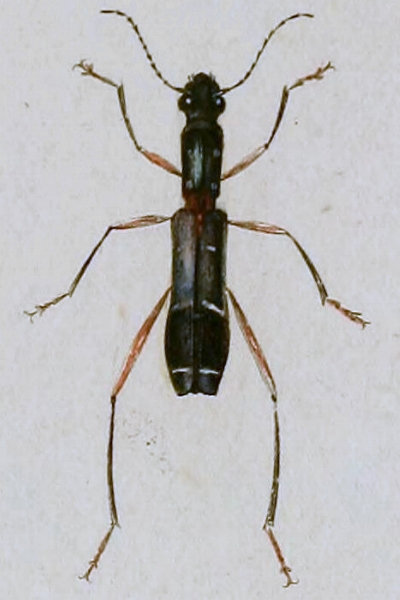| T O P I C R E V I E W |
| Gerard |
Posted - 11/08/2012 : 19:59:03

LAOS, Ban Saleni, Hua Phan, taille 18 mm, Leg. Xavier.
Sclethrus amoenus à confirmer  |
| 15 L A T E S T R E P L I E S (Newest First) |
| Gerard |
Posted - 12/08/2012 : 21:32:36
Thank you very much for this interesting post.  |
| Xavier |
Posted - 12/08/2012 : 20:57:00
First class contribution. Thanks a lot !! |
| Francesco |
Posted - 12/08/2012 : 20:35:33
Wonderful!!!
Thank you very much! |
| horshehden |
Posted - 12/08/2012 : 20:18:08

You're right. It comes from S India. See the map. I believe it is distributed all over South India. |
| Francesco |
Posted - 12/08/2012 : 19:55:57
Thank you a lot for this key, Horshehden!!!
But finally, what is the typical locality of S. amoenus? |
| Xavier |
Posted - 12/08/2012 : 15:34:54
Thanks a lot ! 
What can we say about " legs bicolored light brown and black (S. amoenus) / legs entirely dark brown (S. stenocylindrus)" ? |
| horshehden |
Posted - 12/08/2012 : 15:16:56

There was quite interesting paper on this genera by Han and Niisato in 2009.
Here is the key. |
| Xavier |
Posted - 12/08/2012 : 12:44:34
So, thanks to you and to horshehden.
I change this name in my database. |
| Francesco |
Posted - 12/08/2012 : 11:21:03
I have seen that Hua (2002) has rehabilitated S. stenocylindrus... I agree: that was another Gressitt's "bêtise". |
| Xavier |
Posted - 12/08/2012 : 11:12:00

Another photo of this species. 15 à 17 mm (4 ex.), Hua Phan, nord-est Laos, les dessins sont stables. |
| Francesco |
Posted - 12/08/2012 : 11:09:59

Actually, the situation is much more complicated.
This is the original drawing of Ibidion amoenum (Gory, 1933), a species described from Malabar (India) and not from the Philippines as Gressitt & Rondon erroneously quoted.
This genus is unknown from India (Gahan, 1906) and this locality seems to be erroneous .
Newman (1842), who instituted Sclethrus, recorded S. amoenus from the Philippines, but it is unknown whether it was the same species.
Hüdepohl (1990) considered Philippines as a false locality. The Philippines are inhabited by two species: S. newmani with ^-shaped band (evidently, Newman's amoenus) and S. macgregori with triangular band (but this species does not correspond to the original description).
The true problem is the typical locality of the first species. However, judging from the pictures, it seems to me that S. stenocylindrus is not the same species of S. amoenus. |
| Gerard |
Posted - 12/08/2012 : 10:41:53
Thank you in having Sclethrus stenocylindrus Fairmaire, 1895.
Xavier si tu peux mettre des photos de tes spécimens pour avoir un aperçu de la variabilité de l’espèce. |
| Francesco |
Posted - 12/08/2012 : 09:46:09
BioLib refers the synonymy introduced just in Gressitt & Rondon (1970: 279), but I do not know whether this statement corresponds to the reality.
Concerning the Philippine species, I noticed that S. macgregori Schultze figured by Hüdepohl (1990: 336) does not correspond to the description and the original driving (here). Actually, Hüdepohl did not quoted any specimen coming from the typical locality (Panay). The true S. macgregori should be similar to a specimen preserved in Luxembourg, which I have mentioned in this paper.
The entire geonemy (and taxonomy) of this genus deserves to be updated. |
| Gerard |
Posted - 12/08/2012 : 09:31:47
Hello on BioLib S. stenocylindrus is in synonymy with s. amoenus
BioLib error? |
| Xavier |
Posted - 12/08/2012 : 00:08:15
For biolib, it's ...the same species, from China, Laos, Philippines, Singapore, Sumatra, Viet Nam; |


